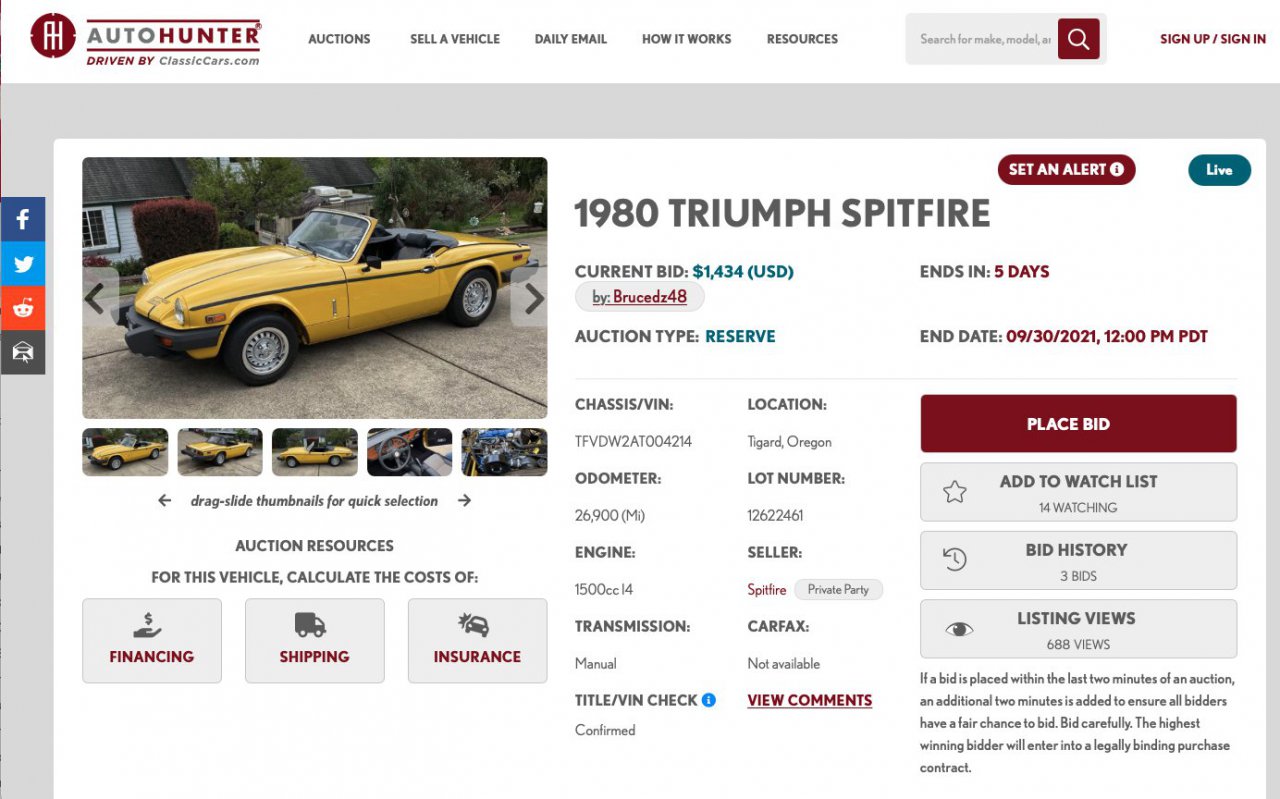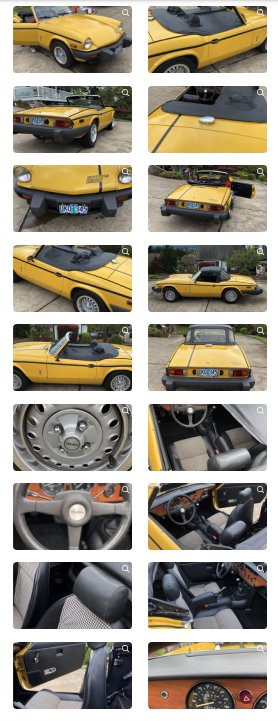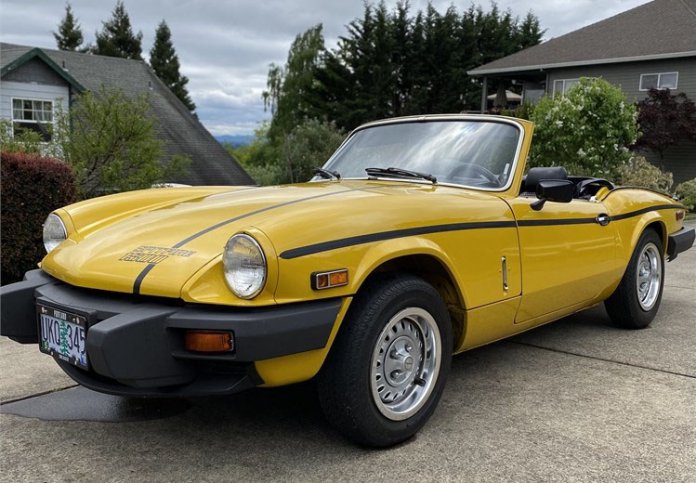(Editor’s note: During the month of September, we’re publishing a series of articles about selling a collector car. Today, Andy Reid looks at selling through an online auction.)
Unless you have been hiding under a rock for the last few years, you are aware that online auctions have become a great way to sell a car, sometimes for quite a bit of money.
Before you decide that an online auction is the best way to sell your car, let’s first talk about some reasons you might want to choose any of them as the place to sell your collector car.
One of the benefits on an online auction is that they can reach thousands, sometimes even millions of potential buyers. Part of the reason for this is that an online auction is a timed event, with a definitive end time for the sale.
This is different from a standard online advertisement, which will offer your car for sale until it is sold. The definitive end time for online auctions builds excitement and gives a sense of urgency to prospective buyers.
The bidding process itself also can add a competitive element to the act of buying your car, and can drive up the price as two or more bidders try to outdo each other other. This does not always happen, but when it does good things tend to happen for the seller.
Another benefit of an online auction is that if your car is either set at no reserve or a reasonable reserve, it is very likely to sell and in a set time limit. This helps the seller to avoid months of phone calls from potential buyers, showing the car over and over again, and all the other aggravation that can occur when you try to sell the car privately.
The final benefit when you do sell the car at auction is that once the car is gone, it is gone. You do not need to field after-sale questions from the buyer if you do not want to, and the minute it leaves your garage you can let go of any responsibility for that car.
However, an online auction does not provide the same level of anonymity for the seller as a live auction, but it definitely has less hassle than just selling privately.

So, after reading all of that, you have decided you want to sell your car at an online auction, what are the steps you need to take to make the auction as successful as possible?
The first thing you should do, even before contacting the online auction company, is to do a little research online and come to an educated decision of what your collector car is worth.
Be realistic.
You need to be as objective as possible in evaluating the condition of your car, and then use a valuation tool, such as that provided on the Hagerty website, to established your asking price. We all love our collector cars, but this is a time when you need to be a bit more scientific.
For example, a 1969 Chevrolet Corvette with the L88 engine option is worth considerably more than one equipped with an L46 engine. Also, as a rule, cars with an automatic transmission are worth less than those with a manual gearbox. Ditto for cars with air conditioning, which can add 10 percent to the value of some cars.
If your car still has its original and factory-installed engine and transmission, this adds value. If not, you likely will have to deduct as much as 30 percent from what you thought it was worth.
A final note about determining the value of your car is that you should not consider “how much you have in the car” and strive for that number. Just because you spent $70,000 restoring a Triumph TR6 does not mean I it is worth $70k. I am pretty certain no TR6 road car is worth that much money. What you spent to get it there can be a sales tool, but not a tool use to come up with the price you want. The market sets the price, not your personal restoration costs.
Next, present your car to the online auction, informing the site what the car is worth and its condition. The auction company likely will want to haggle about the reserve (the minimum amount you’ll accept for the car), but if you did your homework, you should be very close to the mark.
Obviously, we like AutoHunter, the online auction platform driven by ClassicCars.com.
Also, be sure you like the people you are dealing with. Ask about the customer service offered before and after the sale, the kinds of marketing you can expect your car to receive, and the details around listing fees and commissions. All of these things can be negotiated, and you should ask questions about every phase and get something in writing regarding those issues.
Now that you have picked the online auction company, your next step is to get your listing done. This requires a well written and extremely complete description of your collector vehicle. This should include any interesting about your car’s history, as well as its restoration and service history, awards won, color combination,s and whether they are what the car was originally, all options, all modifications. In other words, literally everything.
You should supply all of this infomation to the auction company and unless you are a professional writer, allow them to write the description. After they complete it, be sure you get to proofread what has been written and ask for any changes or additions that are needed.
An extra tip is if your car is in a factory color, be sure to name the exact color that the factory called it. This simple addition will attract the experts for that car and add a level of credibility to your cars listing.

Next, get many high-quality pictures of your car taken. I say to get this done as if you are not the best photographer you should consider hiring a photographer who is. In most cases, the auction company will have a photographer contact in your area who specializes in this. This service will cost you something, but the photographs in your listing are one of the most important parts and the single biggest way to attract buyers.
When your listing is completed and you receive the assigned date and time when it will go live, the exciting, stressful and time-consuming part of the process starts. As bids come in you get more excited and as comments and questions come in your mood will vary from happy to angry and everything in between.
You need to be sure to monitor your listing often, think hourly, and reply to questions and comments quickly. If you fail to reply to the questions and comments potential bidders will tend to become suspicious and you will not get bids on your car. If a comment is negative, either provide a truthful answer or, if it is along the lines of t“Camaros are all ugly,” simply ignore it. People interested in your car will ignore the nonsense posts and will often fight for you. It is best not to engage with an opinionated knucklehead who simply hates your make, model, or year.
If you doubt the need to reply when asked a question, simply take a look at some of the online auction listings and see what happens when sellers do not respond. You need to be sure to do this during the entire run of the auction.
Near the end of your auction, be aware that it is common practice to receive a call from the auction company if your car is close to the reserve, asking you to lift the reserve. This is a good idea 99 percent of the time as it lets buyers know that the car will be sold to the highest bidder and adds an incentive for them to click the bid now button. Also, it is good to remember that in every single car deal, the best sales are those in which each side has been willing to give a little.
Also, removing the reserve can open a floodgate to bidders and your car may well sell for more that you imagined.
Hopefully if you follow these steps you will be happy at the end of the sale. Remember that the process can be time consuming, but also be quite exciting, and if you come into the auction with a realistic idea of what your car is worth and follow up on all these steps, you are likely to have a happy result — and have some fun as well.





